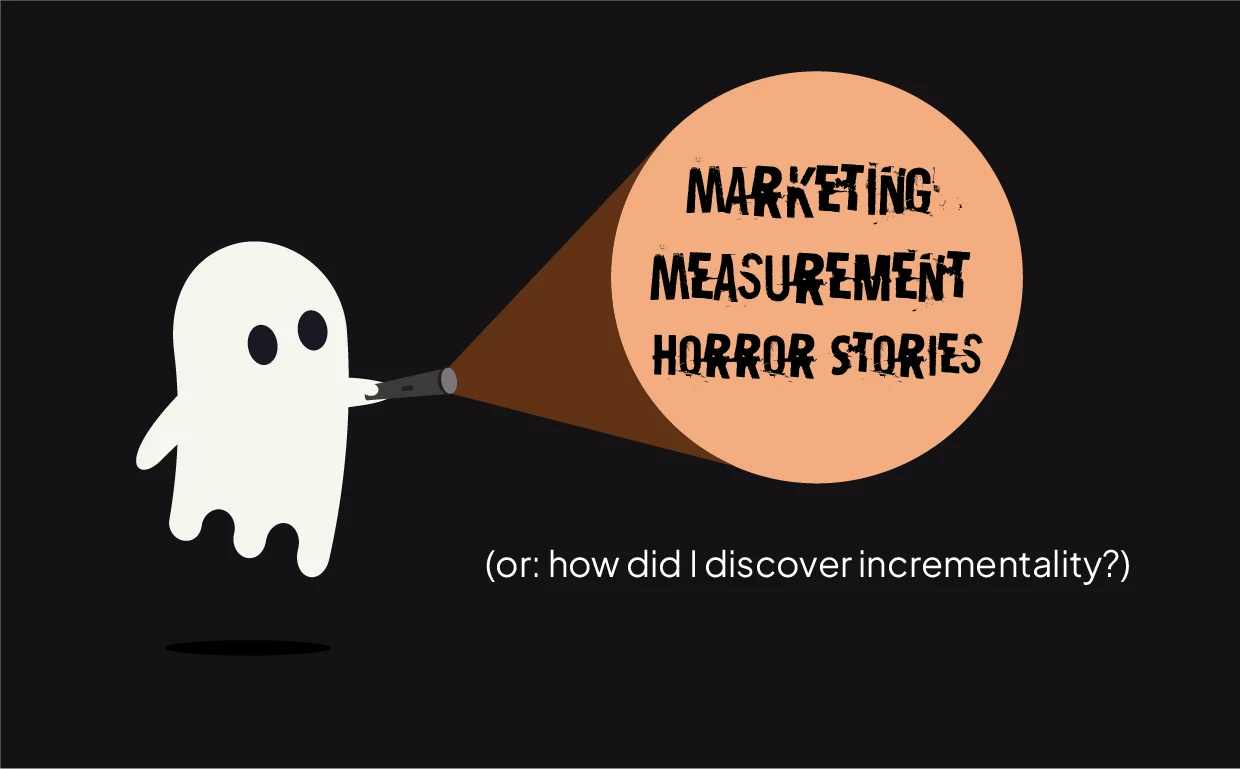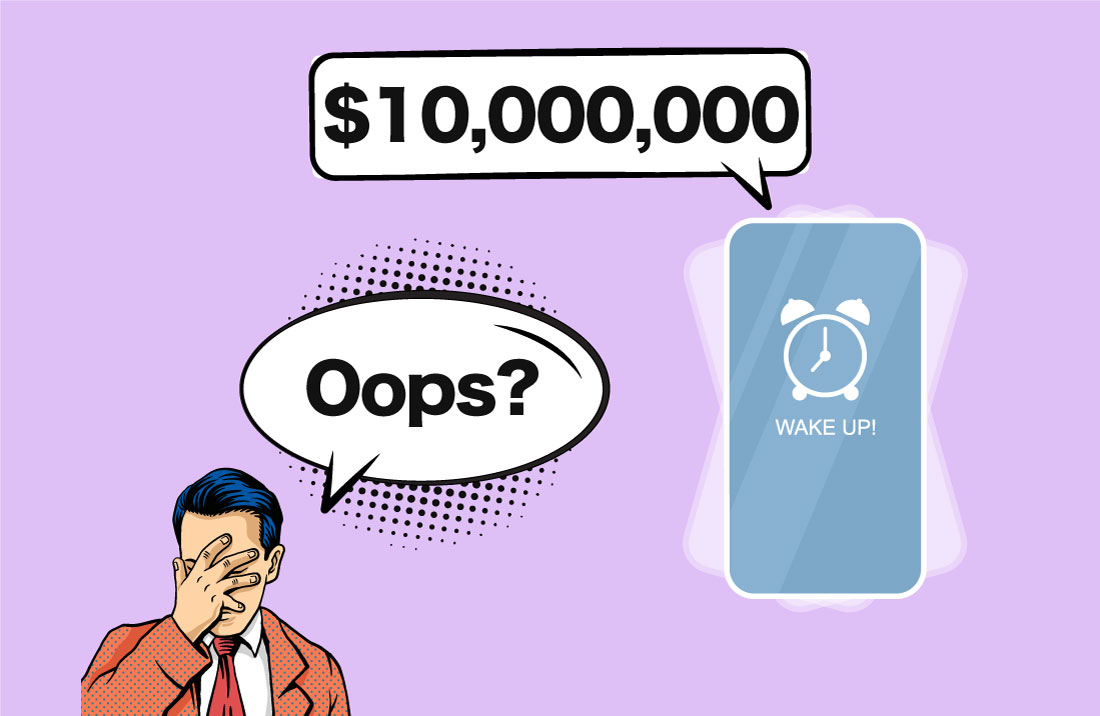Solutions
Teams
Built for your whole team.
Industries
Trusted by all verticals.
Mediums
Measure any type of ad spend
Platform
Use Cases
Many Possibilities. One Platform.
AI and Automation
The Always-on Incrementality Platform
Teams
Built for your whole team.
Industries
Trusted by all verticals.
Mediums
Measure any type of ad spend
Use Cases
Many Possibilities. One Platform.
AI and Automation
The Always-on Incrementality Platform

Every CMO working with us has a horror story to share. Most CMOs spent years perfecting their marketing strategy, believing every dollar was tracked, every ad accounted for, and every conversion attributed to its rightful source – only to wake up one day to realize that it was fiction.
Through horror stories, CMOs learned a painful truth: attribution models aren’t reality—they’re just a story platforms tell you.
Here are three horror stories from CMOs who found out, far too late, that their marketing budgets were built on false assumptions.
A direct-to-consumer (DTC) brand that shall remain nameless, had a massive paid media budget. Their attribution model was a well-oiled machine, showing exactly which platforms, campaigns, and creatives drove conversions.
They had scaled spend aggressively, adding $10 million to high-performing channels over a year. Everything looked great—customer acquisition was soaring, ROAS was stable, and finance was happy.
Then the recession hit.
Finance came back with a brutal request: Cut 30% of the budget.
The marketing team went into panic mode. They had to be surgical about what to cut. They relied on their attribution models, trimming the "lower-performing" campaigns while protecting the top ones.
And then something strange happened.
Sales didn’t drop.
Not immediately. Not a little. Not at all.
A week passed. Then a month. The marketing team started sweating. Where did those conversions come from if not from paid media?
They dug deeper and realized the ugly truth: Their attribution model had been double-counting demand that would have existed anyway. It was over-crediting paid search, overestimating the impact of social ads, and failing to acknowledge brand equity.
The CMO had spent millions on campaigns that weren’t driving net-new customers. The whole time, the attribution model had been painting a fictional version of reality.
A subscription business most of us know and probably use was well known as one of the most sophisticated companies when it came to marketing. They used a sophisticated multi-touch attribution model to track user acquisition across channels.
They were convinced they had cracked the formula—Facebook and YouTube were killing it, customer LTVs were solid, and they had a roadmap to aggressive expansion.
Then Apple dropped iOS 14.5.
Suddenly, attribution reports became incoherent. Platforms that had once shown reliable performance started reporting wildly different numbers. One month, CAC looked great—then, out of nowhere, it doubled.
Finance asked, “What happened?”
The marketing team had no answer.
In desperation, they ran an experiment—scaling back spend on their top two paid channels by 40%.
And then the nightmare hit:
Their attribution model had been feeding them an illusion. It wasn’t that the campaigns weren’t working—but they were far less impactful than what the dashboard had been reporting.
Attribution had created the illusion of control - but in reality, the marketing team had been chasing ghosts.
You may have met a CMO obsessed with efficiency. The one who’ll ask the most non obvious questions during a vendor meeting, the one who’ll negotiate in the most embarrassing way during a large participant zoom meeting. Most of us know the type.
This company had built a sophisticated multi-channel attribution setup. They used one of the major MMPs, but it was not their source of truth, so they spent over 24 months in an internal project to improve their own attribution. Their own models, assigned credit across paid social, search, influencers, and even TV. The numbers were pristine—every channel’s contribution was meticulously calculated.
But then, one day, they made a disturbing discovery.
They had launched a new campaign on a small platform—a test budget, nothing serious.
Almost immediately, they saw a spike in attributed conversions. The platform’s dashboard showed amazing performance—ROAS was through the roof.
Excited, they doubled the budget.
And then a data analyst pointed out something odd:
Overall conversions didn’t change.
They dug deeper. What they found was shocking:
The platform had been taking credit for conversions that had already been happening.
Intentionally, or unintentionally will be for courts to decide, or for lawyers to settle on – but what is true – if it wasn’t for them measuring incrementality – they would continuously spend around $500K per day(!) with this platform.
It was an attribution mirage.
Had they trusted their model blindly, they would have poured millions into a channel that wasn’t actually growing the business.
Bob had heard enough. He had spent years trusting attribution models—believing the clean, neatly packaged reports that told him where conversions came from.
But these horror stories made one thing clear:
Attribution isn’t truth. It’s just an interpretation of reality.
Attribution tells you where a conversion was recorded.
Incrementality tells you if it would have happened anyway.
Attribution shows you what’s on the surface.
Incrementality reveals what’s actually driving growth.
And that’s why Bob—and the CMOs who lived through these nightmares—stopped chasing ghosts and started using INCRMNTAL.
Because marketing budgets are too big, and the risks are too high, to keep relying on a model that only tells part of the story.
Would you rather trust a dashboard, or would you rather know the truth?